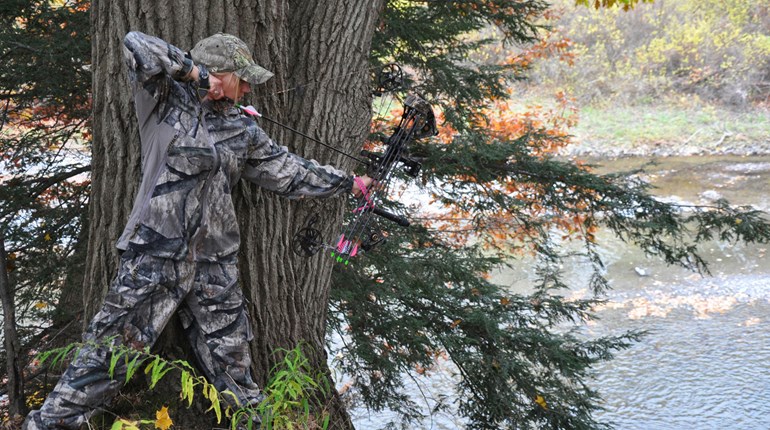
As far as I’m concerned, ticks are just about the nastiest, most useless creatures on the planet, and because I live in the South, they’re a year-round concern—I’ve butchered a deer in December and found it crawling with ticks.
If we want to better protect ourselves against these dangerous pests, it helps to understand them and how they work, and to know what to do when you find one on you. There are a lot of myths and old wives’ tales around ticks, but we’re here to bust a few of those myths for you.
Myth #1: Ticks Often Fall from Trees
Truth: You’re most likely to pick up a tick in fields or wooded areas with high foliage, but ticks can’t fly or jump. They live on the ground and they climb grass and shrubs, but there aren’t big quantities of ticks climbing up into trees and then dropping on you.
Rather, many species of ticks will rest on the tips of grasses and shrubs, waving their first pair of legs around just waiting for a host—a deer, a person, a dog, etc.—to walk by. Then they’ll use those front legs to grab on and hitch a ride. Some will attach to the host quickly, while others will wander around for a while looking for an ideal spot, often somewhere where the skin is thinner.
Myth #2: Bite = Infection
Truth: First, not all ticks carry disease at all. For example, Johns Hopkins reports that only 1 percent to up to 50 percent of ticks in a given area, depending on geography, will carry Lyme (although Lyme is far from the only disease ticks can carry), and they say that “most tick bites are harmless.”
Second, the CDC reports that a tick needs to be attached for “minutes to days,” depending on the species and the disease they might carry, to transmit an infection. “Your risk for Lyme is very low if a tick has been attached for fewer than 24 hours,” they report. If you feel the tick bite, as I have before, and remove it immediately, you’re almost certainly in the clear.
Myth #3: All the Ways to Make a Tick Let Go
Truth: You don’t want a tick to let go of you, because when a tick backs out on its own, it is likely to—sorry, there’s no good way to say this—vomit some of its own saliva and stomach contents into you on its way out. That nastiness is where the infection is carried, so forget about all the ways you’ve heard of to make a tick let go and back out: Soap on a cotton ball, smother it in Vaseline, touch a hot match to it. They’re all much more dangerous than just removing the tick the right way: By pulling it out.
The CDC recommends you just pull a tick out if you find one embedded in your skin by using tweezers to grasp the tick close to the skin. Pull upward with steady, even pressure. Then clean the bite area with rubbing alcohol or soap.
Myth #4: You Have to Dig the Head Out
Truth: Even people who do follow the “just pull it out” guidelines get a little freaked out when the tick’s head doesn’t come out but stays embedded in the skin. No worries—the head can’t transmit disease on its own, so that risk has passed. The CDC recommends you try to remove the head with tweezers if it’s easily done, but don’t go digging around and opening a wound, which can lead to an infection or cellulitis. If the head can’t be easily removed, just leave it alone and let the skin heal. I know it looks and sounds gross, but your body will push it out in a couple of days.
Myth #5: You’re OK if You Don’t Get the Bullseye Rash
Truth: Only about 70 percent to 80 percent of people infected with Lyme get the typical bullseye rash. You could still be infected even if you don’t get a rash at all. Talk to your doctor about getting tested for tick-borne diseases if you experience a fever or other flu-like symptoms after a tick bite, rash or no rash.
Myth #6: You Should Have the Tick Tested
Truth: It seems logical to put a tick that has bitten you in a jar and take it to be tested for infection, but the CDC recommends not doing this, for several reasons: For one thing, false negatives are very possible, especially considering that the labs that conduct tick testing aren’t held to the same quality control standards as clinical diagnostic labs. Even if the tick tests positive, that doesn’t necessarily mean that it transmitted the infection to you. And if you have been infected, you’ll likely be showing symptoms before the tick test results are back anyway.
Myth #7: Possums Are “Tick Vacuums”
Truth: “Possums eat ticks like crazy” is one of those pieces of outdoor folklore that everyone has heard, but it turns out it’s not true at all. The study this myth was based on was really, obviously faulty: Basically, some scientists trapped four possums in a lab, put 100 larval ticks on each possum (they did the same with chipmunks, squirrels, mice and more animals) and counted how many ticks fell off full of blood for a few days. Only a few ticks fell off, so they figured the possums had eaten the rest of them, and they did some fuzzy math to extrapolate and came up with the claim that a possum in the wild eats more than 5,000 ticks each season. They didn’t bother to check how many ticks were still attached or stuck in the possums’ fur, and they didn’t examine scat or stomach contents to confirm that the unaccounted-for ticks had been eaten.
The trouble is, lab conditions and real-world conditions are wildly different, and a subsequent study that analyzed the stomach contents of actual wild possums found that they’re not really eating ticks at all, much less in large numbers. Myth busted!














































